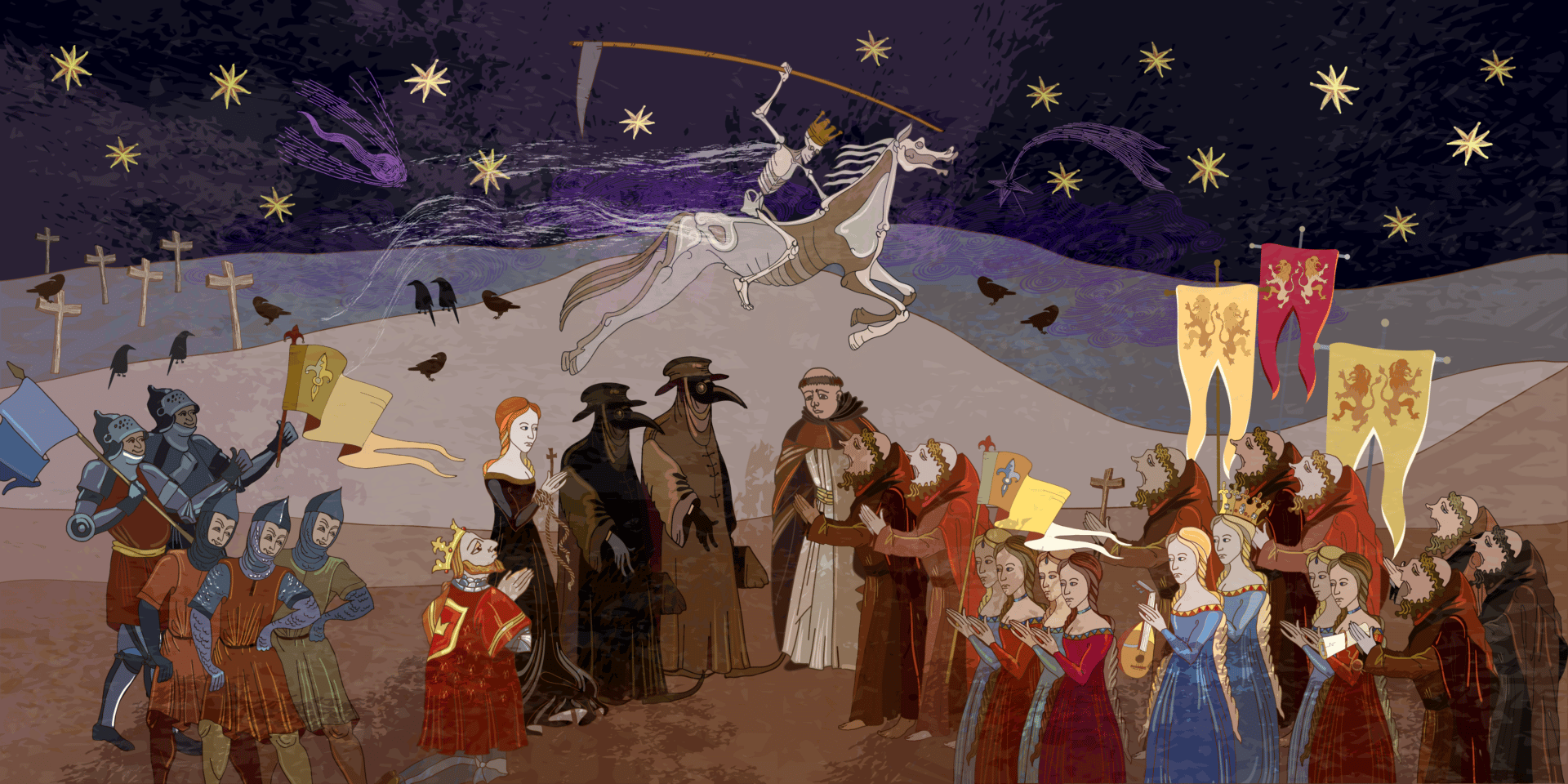
An illustrated history of the world’s deadliest epidemics, from ancient Rome to Covid-19
January 16, 2023
How does the COVID-19 pandemic compare to viral outbreaks of the past? As the world lurches into a fourth year of the COVID-19 pandemic, the official death count based on public disclosures is currently 6.7 million, but estimates of excess deaths put the true toll closer to 21 million. Due to the unreliability of official figures, it can be tricky to nail down an exact number. This is nothing new, even at a time when analytics reign supreme.
The history of human civilization is riddled with grizzly stories of epidemics, many with wide ranges of uncertainty around the true toll of their devastation. Unfortunately, the only certainty is that more pandemics are coming. Since the transition from hunter-gatherers to agricultural societies, the conditions for the spread of disease have grown. As early empires stretched across the global landscape, global trade networks, industrialization, and war would further add to the body count. Today, climate change, environmental degradation, and rapid global travel make it easier than ever for viruses to “spill over” from animals to humans and spread rapidly.
COVID-19 is just one of multiple outbreaks occurring today; HIV/AIDS has claimed more than 40 million lives, and even bubonic plague still claims lives. In that light, it is worth looking at how past epidemics have changed the course of history and shaped the modern world. After all, as David McCullough points out, “history is who we are and why we are the way we are.” Inevitably, epidemics are a part of that history.
NOTE: The list below is a deep dive into the known historic epidemics and pandemics that resulted in more than one million deaths. Some epidemics are not included because of data uncertainty or availability.
Jump to a specific epidemic or pandemic:
Jump to specific epidemic or pandemic: The Antonine plague | The Plague of Justinian | Japanese Smallpox Epidemic | The Black Death | 1520 Mexico Smallpox Epidemic | Cocoliztli epidemic of 1545–1548 | Cocoliztli epidemic of 1576 | 1629–1631 Italian plague | Naples plague | 1772–1773 Persian Plague | Cholera outbreaks 1817–present | Third plague pandemic | 1889–1890 Flu Pandemic | 1918 Flu pandemic | 1918–1922 Russia typhus epidemic | 1957–1958 Influenza Pandemic | 1968 Influenza pandemic | HIV/AIDS Pandemic | COVID-19 Pandemic
The risk of another pandemic similar to COVID-19 is about two percent per year; however, this estimate is expected to increase threefold in the future because of an increased risk of zoonotic spillover—when viruses move from animals to humans—caused by human activity.
As David Quammen notes in Spillover, “We should recognize that [outbreaks] reflect things that we’re doing, not just things that are happening to us.” In other words, it’s foolish to think that epidemics occur randomly and spread without help. Climate change, conflict, and environmental degradation are all contributing factors.
Today, drought and forced migration in the Horn of Africa has increased the threat of famine and is leading to infectious disease outbreaks. When outbreaks do occur, it’s easier than ever for them to spread far and wide. In March 2020, an outbreak of COVID-19 at an Austrian ski resort was linked to positive cases in 45 different countries. Rapid global transportation systems make it easy for viruses to spread once an outbreak occurs. Sadly, it has been further shown that outbreaks of disease are then linked to increased occurrence of xenophobia, racism, and discrimination, even though viruses aren’t capable of differentiating hosts at that level.
From a technical perspective, the ability to address disease outbreaks is stronger now than at any time in human history. The COVID-19 vaccines, for example, were approved in record time and saved upwards of 20 million lives in 2021 alone. Still, the circumstances surrounding the emergence and spread of COVID-19 remain largely unchanged.
There’s no telling what virus will slink out of the forest next. Hopefully, scientific advances will help to mitigate the harm of any future pandemic, whether it be a new virus or an ancient pest. Humanity has been here before and will be again.

An excellent article with stunning supporting graphics. It underlines the role of pandemic disease in history – often as the catalyst of collapse and change in empires.
China, India, and Africa do not have a great presence in this narrative. I understand why this would be the case. But I do wonder how much more there is to learn. And how much of the warp and weft of the human story is determined by disease.
Interestingly enough, while what happened in Mexico is described in detail, there is also little coverage of the native deaths in North America and South America. Clearly, we have documentation of the great numbers of peoples who were described in the Mississippi Valley that had disappeared a few years later. I have read that 18 million native people died in North America alone. (Unfortunately, the rest were hunted for sport or displaced from their native lands. As usual we think today that North America was unpopulated when Europeans arrived–it was not. Andrew Jackson did his best to remove any remaining… Read more »
The Persian plague epidemic of 1772–1773, also simply known as the Persian Plague, was a massive outbreak of plague, more specifically Bubonic plague, in the Persian Empire, which claimed around 2 million lives in total.It was one of the most devastating Plague epidemics in recorded human history. The outbreak resulted in the introduction of several quarantine measures for the first time in the Persian Gulf regions. The epidemic is believed to have “started in Baghdad in the winter of 1772.” It then spread to other parts of the Persian-controlled lands. By 1773, the epidemic reached Basra, where it proved to be especially devastating, claiming more than 250,000 lives there alone.The Plague then… Read more »
Not a word about tuberculosis! If ever there was a plague………………….